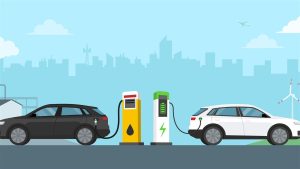Enerlink, a company specialized in offering charging solutions for electric vehicles, has become in 2023 one of the important actors to promote electric mobility in Chile and the region.
In this sense, beyond presenting solutions in commercial matters, the company offers guidance when entering the world of electromobility.
In its blog, Enerlink exposes the advantages and disadvantages in the acquisition of electric vehicles and how to make the best decisions.

Read also: Enerlink Secures Capital Investment for Electromobility Transition in Chile and the Region
Evaluating Pros and Cons when Deciding
Enerlink stresses that each driver must evaluate these advantages and disadvantages according to his or her needs and priorities. Mobility in urban environments is undergoing a major transformation, and the choice of vehicle has personal, economic and environmental implications.
However, it is essential to keep in mind that the comparison between electric and conventional cars is a complex and varied process.
Several factors influence this choice, such as vehicle size, driving patterns, grid power source, and manufacturing-related emissions, among others.
With respect to environmental impact, Enerlink notes that the choice of electric versus conventional cars primarily addresses environmental concerns.
“This choice is not simple; it depends on multiple factors such as local characteristics and the origin of the energy used. One relevant fact is that, during operation, electric cars do not emit CO2, NOx or other harmful particles. In fact, one study indicates that these vehicles could reduce emissions by up to 43% compared to diesel”, explains Enerlink.
Another aspect to consider is the manufacture of batteries for these cars. Surprisingly, about 50% of the emissions associated with their production come from the electricity consumed in the process. But it is important to note that these emissions vary depending on where the batteries are produced and the type of electricity used.
Electric cars are an excellent alternative from an environmental point of view, especially in areas where a clean energy source predominates.
Despite the carbon footprint in the production of their batteries, their overall balance can be greener, especially if they replace conventional vehicles and take into account the region’s energy source.
Charging Infrastructure
When opting for an electric car, it is crucial to consider the charging infrastructure in each region. This can make a big difference in your daily experience, as the number and availability of charging stations for electric cars directly influences the practicality of owning this type of vehicle.
In the current Latin American scenario, charging stations, also known as “electrolineras”, are not as abundant as traditional gas stations.
While it is true that technology is advancing and charging times are decreasing, it still does not compare to the speed of filling up a tank of fuel.







